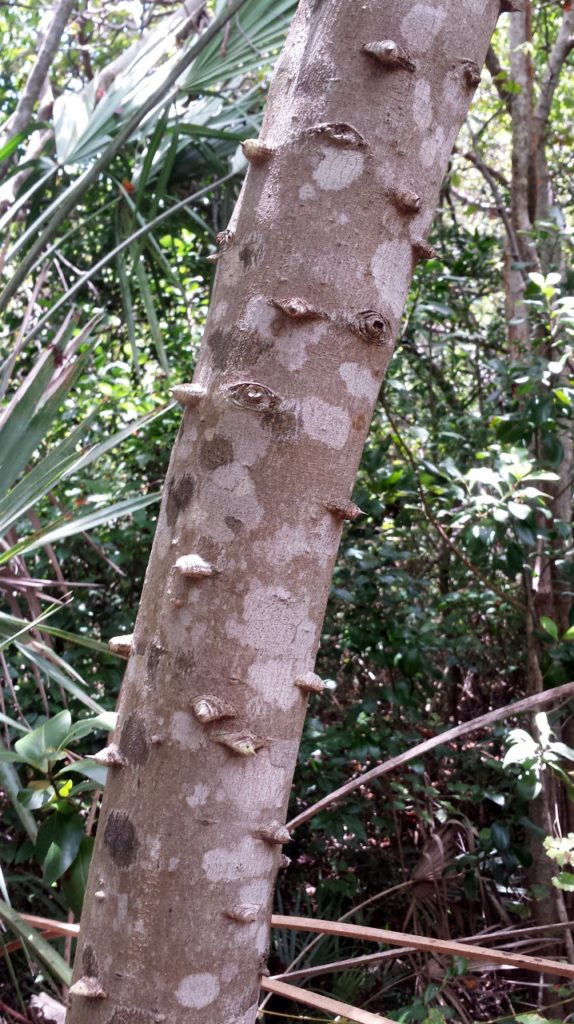
Hercules’ Club
Zanthoxylum clava-herculis
Hercules’ Club is the best attractor of giant swallowtail butterflies. This large butterfly lays its eggs, which grow into a large caterpillar that looks like a bird dropping, on the young leaves. You will have several of these giant swallowtail butterflies in your yard if you have this wonderful 12 foot tree on the property.
You will need several trees, which are dioecious, in order to have seed form on the female plants. These are eaten by cardinals and other seed eating birds. The leaves have a tangy flavor that if chewed will numb your mouth. The other name of Toothache Bush comes from this property. It is not poisonous, but should not be eaten, just tasted.
Hercules’ Club is found along the coast and in scrub and dry pastureland throughout the Southeast. It can take freezing weather, dry soil and low amounts of salt spray. It is covered with sharp, straight spines which turn into corky looking nubs on the trunks. It will sucker a bit, but the extra plants can be removed easily.
Even though this seems like a dangerous plant to have around, its upright growth and up to 30 foot height make it easy to limb up and keep the branches away from people. The thorns can be easily clipped off too as there are not very many of them. Compared to Wild Lime, which is the other host for the Giant Swallowtail butterfly and has cat claw like thorns, this is much safer.
The compound, shiny leaves are a bit like Brazilian Pepper yet much more attractive. When designing a butterfly garden, I like to hide the Hercules Club inside a mass of other plants like Firebush, Wild Coffee, Saw Palmetto or anything that will keep people away from it. Once it is tall though, the lower branches can be trimmed and this beautiful, knobby trunked tree can be one of your most interesting specimens.
It will need full sun, so plant it with sun loving plants like Button Sage, Bloodberry, Beautyberry, Firebush, and other caterpillar hosts like Chapman’s Cassia, Red Bay, Coontie, Hackberry, Wild Lime (which needs lots of space), Native Plumbago and Short Leaf Fig. Maybe just plant wildflowers beneath it to keep people away until it can be limbed up.